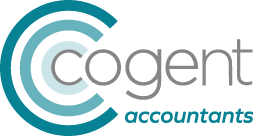Are you on LinkedIn? I am sure many of us are but are we making the most of this professional social media platform?
LinkedIn has had a massive revival in the last few years and become a critical platform for contractors to find new work. There are now more than 310 million monthly active users on LinkedIn around the world.
But how can contractors make a name for themselves on the platform and get recognised to win new work? In our quick guide below, we look at some of the essential steps for getting established on this platform.
How good is your profile?
Many of us set up a profile when we first create an account on LinkedIn but then fail to update it or add new content to it.
The first step is to make sure you follow LinkedIn’s guidance for completing your profile. There are so many LinkedIn accounts out there that don’t have photos, a suitable header image or even the ‘about’ section properly completed.
This can really affect the look and feel of your profile and can be quite off-putting to people looking to engage your services – especially if they are looking at other contractors with more complete profiles.
Next, make sure to link previous contracts or work positions with the right company pages and similarly list the schools, colleges, courses and universities you have attended.
LinkedIn recommends new connections via these links, which will help you to be seen by more people.
It is important to keep your profile up to date and add latest information as soon as you can, including updates to your:
- Skills
- Roles
- Accreditations
It also doesn’t hurt to ask the engagers of your services to leave recommendations. To encourage this, make sure you connect with your clients when you begin a new contract and, where possible, send them a recommendation as well.
This will encourage them to reciprocate and hopefully leave feedback on your feed that could help you to secure future work.
Are you open to offers?
Something that many LinkedIn users may not be aware of is a feature that advertises whether you are available for new contacts.
If you have this turned off, it means that your account won’t be accessible or highlighted to recruiters or agencies that are looking for contractors.
It is quite easy to change this in your settings using these two simple steps:
- On the privacy tab, select job seeking preferences.
- Toggle the button under let recruiters know you’re open to opportunities to yes.
You can also let recruiters know more about the job offers you are open to by using the #OpenToWork Work Feature, which allows you to add a new section to your profile.
To do this simply:
- Click Add profile section and select Intro
- Edit job preferences – recruiters tend to look at location and job title when looking for the right talent
- Select share with recruiters only under the choose who sees you are open tab
Completing these two sections should help engagers and recruiters to find your profile more easily when looking for experts to fulfil their roles.
However, it doesn’t also hurt to include something in your main ‘About’ section about your current work status. This is often the first thing that new connections will see.
As well as making yourself open to options, there are many things that you can do on and off LinkedIn to find new contracts, including a growing number of recruitment days highlighted by engagers, such as this example here. We will look at these days in more detail in future newswires.
How regularly are you posting and engaging on LinkedIn?
The algorithms that power LinkedIn decides how profiles are recommended and shared with other contacts.
While part of this algorithm focuses on the information in a person’s profile, such as their skills, expertise, job roles and accreditations, they also favour active users more.
If you aren’t regularly sharing or engaging with content on LinkedIn or posting your own updates, then you may find that your account is seen by fewer people.
Despite it’s look and feel, LinkedIn is, after all, a social media platform and so it expects a level of socialising.
This doesn’t mean you have to be a slave to your LinkedIn feed, but it doesn’t hurt from time to time to comment on posts, like them or even produce your own short updates on the platform.
This could boost the number of people that see you online and may help engagers find your expertise and services more easily, often resulting in more work opportunities.
We hope this brief introduction to LinkedIn is useful to you. We hope to bring you further tips and tricks in a series of articles in our next newswires, so make sure you stay subscribed.
